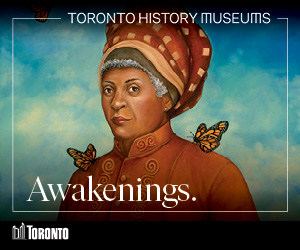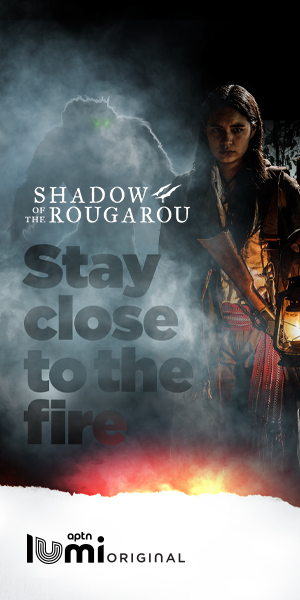
The ten war medals of Canada’s most decorated aboriginal war hero Sergeant Thomas George Prince, a veteran of WWII and the Korean War, returned to the Prince family after being lost for over 30 years. Thomas Prince
“I was out in Halifax for the AFN meeting when I got the call that the medals were coming up for auction. We re-organized our committee and began to write letters for a fundraising media campaign and I did some radio talk shows,” said Jim Bear, nephew to the late Thomas Prince.
Money and pledges poured in from across the country. Bear, a prominent member of the Winnipeg aboriginal community has been after the medals since 1995, when the medals first re-surfaced after eighteen years after the death of Tommy Prince in November 1977. The medals were auctioned off by a Winnipeg coin dealer for $17,500 in 1997.
The ten medals were bought by the Prince family at a London, Ontario auction for $75,000 on the third bid.
The medals from WWII includes the King George Military Medal and the US Silver Star, which was presented to Prince at Buckingham Palace by King George VI, for his five years of outstanding service as a member of the First Special Service Force, a combined Canadian-US elite airborne unit that came to be known as the famed “Devil’s Brigade”.
The wartime experience of Sergeant Tommy Prince is the stuff of legend. He was a quiet ordinary man who had greatness thrust upon him by the force of one of the greatest conflicts in the history of Western civilization. It’s as if he was born and bred for one great task and then cast aside by the very society he fought for. He was a true son of his people and a great warrior.
His life story is told in the publication Manitobans in Profile: Thomas George Prince, 1981, Penguin Publishers Ltd., Winnipeg, Manitoba. It’s a fascinating piece of Canadianna.
The early years
Thomas George Prince was the great-great-grandson of the famous Chief Peguis, the Salteaux chief who led his people to the southwestern shore of Lake Winnipeg in the late 1790’s from Sault Ste. Marie, Ontario. One of eleven children, Tommy Prince was born in a canvas tent on a cold October day in 1915.
When he was five, the family moved to the Brokenhead reserve just outside of Scanterbury, some 80 kilometers north of Winnipeg, where he learned his father’s skills as a hunter and trapper.
As a teenager, Prince joined the Army cadets and perfected his skill with a rifle until he could put five bullets through a target the size of a playing card at 100 metres.

World War II
When war broke out in Europe in 1939, Prince volunteered at 24, and was accepted as a sapper in the Royal Canadian Engineers, which he served with for two years. In June 1940, he volunteered for paratrooper service. The training was hard and very few successfully completed. Prince was one of nine out of a hundred to win his wings from the parachute school at Ringway, near Manchester, England.
It wasn’t his ability to “jump” that made him a good paratrooper. Prince had a natural instinct for “ground”. He would land, creep forward on his belly with the speed and agility of a snake and take advantage of small depressions in an otherwise flat field to conceal himself from view. He was a crack shot with a rifle and crafty as a wolf in the field.
Prince was promoted to Lance Corporal as a result of his impressive skills and in September, 1942, flew back to Canada to train with the first Canadian Parachute Battalion and was soon promoted to sergeant. It merged with the United States Special Force, the airborne unit known as the “Green Berets.”
The First Special Service Force was an experiment in unity that was composed of 1600 of the “toughest men to be found in Canada and the United States.”
All the men were qualifies paratroopers and received training in unarmed combat, demolition, mountain fighting and as ski troops. They were described as “the best small force of fighting men ever assembled on the North American continent” and the “best god-damned fighters in the world and a terror to their enemies.”.
This combined elite force was first called into action in January 1943, when the Japanese occupied Kiska, an island in the Aleutian chain of islands near Alaska in the Pacific but the Japanese had already withdrew.
They went to the Mediterranean, followed by the Sicily landing. By a daring maneuver, it captured strategic Monte la Difensa, an extremely difficult piece of ground. Fighting side by side with the US Fifth Army, it maintained an aggressive offensive throughout the Italian campaign. The liberation of Rome was the culmination of its daring exploits.
A natural hunter, Prince’s fieldcraft was unequalled and in recognition of unique abilities, he was made reconnaissance sergeant. At night, Prince would crawl toward the enemy lines, mostly alone, to listen to the Germans, estimate their numbers and report back to his battalion commander.
Before every attack, he was sent out to reconnoiter enemy positions and landscape formations that could provide cover for an attacking platoon.
Prince’s most daring exploit was on the Anzio beach-head where the Special Service Force had fought for ninety days without relief on the frontlines.
Voluntary assignment
On February 8, 1944, Sergeant Prince went out alone on a voluntary assignment to run a radio wire 1500 metres into enemy territory to an abandoned farmhouse where he established an observation post.
From his post, Prince could observe enemy troop movements unseen by the Allied artillery and radio back their exact locations. Armed with this knowledge, the Allied artillery could lay down an accurate barrage and successfully destroyed four enemy positions.
When the communications were abruptly cut off, Prince knew what had happened. Shellfire from the opposing armies had cut the line.
Without concern for his own safety, Prince stripped off his uniform and dressed in farmer’s clothes left behind. At that time, many Italian farmers persisted in remaining on their farms despite the war that raged around them.
Acting as an angry farmer, Prince went out into the field shaking his fists and shouting at the German-Italian line and then to the Allied line. Taking a hoe out into the field, he pretended to work the field in plain view of the enemy line while he secretly followed the radio line to where the break had occurred.
Pretending to tie his shoe, he secretly sliced the line together and continued to work the field before retiring back to the farmhouse where he continued to relay enemy positions. With the positions of the enemy revealed to the Allied artillery, the enemy soon withdrew.
Only then did Prince return to his CO, Lieutenant-Colonel Gilday who recommended Prince for the Military Medal for “exceptional bravery in the field.”
Devil’s Brigade
It was at Anzio that the Force earned the name “Devil’s Brigade.” In the diary of a dead German soldier was a passage that read, “The black devils are all around us every time we come into the line.”
The passage was a reference to the Force’s tactic of smearing their faces with black and sneaking past Axis lines under the cover of darkness and slitting the throats of enemy soldiers.
Following the capture of Italy, the Devil’s Brigade took part in the seizure of coastal islands during the invasion of southern France. The Force gained the mainland and proceeded up the Riviara until they reached mountainous defenses held by German forces.
To break the impasse, the Force would have to launch a surprise attack, destroy the enemy defensive line and quickly capture the reserve battalions before they could be brought up as reinforcements.
To accomplish this daring move, the Force needed to know the exact location of enemy reserves and details of roads and bridges.
With only a private, Prince breached the enemy line and located the reserve encampment.. On the way back to report, Prince ands the private came upon a battle between some Germans and a squad of French partisans. From a rear position, the pair began to pick off the Germans until they withdrew as a result of high casualties.
When Prince made contact with the French leader, the Frenchman asked “Where is the rest of your company?” Pointing to the private, Prince said “Here.”
“Mon Dieu. I thought there were at least fifty of you!” said the astonished Frenchman.
The French commander recommended Prince for the Croix de Guerre, but the courier was killed en route and the message never reached the French Commander-in-Chief, Charles de Gaulle.
Returning to his own line, Prince was again sent out to the action on the frontline, despite his fatigue. Then, the enemy line was breached and an attack was launched on the German encampment reported by Prince.
When the battle had ended, Prince had been without food or sleep for 72 hours, fought two battles and covered over 70 km on foot. For his role, the Americans awarded Prince the Silver Star.
The Prince meets the King
One of his proudest moments and most cherished memories was when King George VI pinned on the Military Medal and the Silver Star, on behalf of President Roosevelt, and chatted with Prince about his wartime experiences.
Sergeant Thomas Prince was one of 59 Canadians awarded the US Silver Star and one of three who were awarded the King George Military Medal.
In December 1944, the Devil’s Brigade was disbanded. The war in Europe ended while Prince was in England. He returned to Canada and was honourably discharged on June 15, 1945.
Prince returned to civilian life on the Brokenhead reserve and found that few things had changed. He worked in a pulpwood camps and was a heavy drinker on weekends. In 1946, at a dance a woman attacked him with a broken beer bottle and badly cut his right cheek requiring 64 stitches.
It was a major turning point for Prince. He resolved to leave the reserve and get a job in Winnipeg.
With the assistance from the Department of Veteran’s Affairs, he established his own cleaning service with a half-ton panel truck and cleaning supplies and, for a time, prospered.
At the time, the Manitoba Indian Association had been seeking an influential spokesperson and on December 1, 1946 elected him as chairman. The federal government had recently announced the formation of a Special Parlimentary Committee to revise the Indian Act.
Building a better community
The Manitoba Indian Association were concerned about the slow encroachment on their hunting and trapping rights. They wanted better housing, roads and educational opportunities for their children and financial assistance to start up businesses.
Prince arranged for friends to run his small, but profitable business. As chairman, he consulted extensively with aboriginal communities across Manitoba. He developed clear, well-documented arguments that made clear the Manitoba Association’s concerns in a brief presented to the committee on June 5, 1947.
Prince was overcome and frustrated by the legalese government officials threw out to counter his arguments. The committee hearings dragged on for two months, Prince became increasingly frustrated.
He tried to persuade other aboriginal representatives to travel to London and appeal to King George VI whom he had met.
While some changes were made the Indian Act, life for Canada’s Indians remained unchanged. Prince came to realize from the committee hearings that Indian people lacked prestige in the eyes of post-war Canadian society, who generally looked down on Indian people. To change this widely-held view became somewhat of an obsession with him.
He returned to Winnipeg with the intention of building up his business but instead found that his “friends” had wrecked his truck in an accident and was sold for scrap metal. With no recourse, Prince returned to the lumber camps a and worked at a local concrete factory in the summers.
Then, at the age of 34, one week after the Canadian government announced its involvement in Korea, Tommy Prince again volunteered.
As part of its UN commitments, the Canadian government formed and trained the 2nd Battalion of the Princess Patricia’s Canadian Light Infantry (2PPCLI), which Prince joined as a seasoned veteran. He and other veterans were re-instated at their former ranks, in charge of training fresh recruits.
Tom Prince exalted in the military tradition of the 2PPCLI, where he was the hard-boiled sergeant whose legendary exploits were held in awe by the fresh recruits.
Following basic training at Wainwright, Alberta, the 2PPCLI sailed across the Pacific on December 7, 1950 and was the first Canadian unit to land and to become part of 27th Commonwealth Brigade in Korea.
Prince’s service on the Korean frontline was intense, but brief. Second in command of a rifle platoon, the 2PPCLI were part of a commonwealth effort to push back the North Korean forces from hill and mountain strongholds.
In February, 1951, Prince led a “snatch patrol” of eight men into enemy territory and captured two guarded machine gun posts as part of a demoralization effort. The tactic was repeated successfully many times with Prince in charge. But his commanding officers felt that Prince took too many chances with the men’s lives and eventually assigned him fewer patrols.
Prince was with the 2PPCLI when, together with the 3rd Royal Australian Regiment, were awarded the United States’ Presidential Unit Citation for distinguished service in the Kapyong valley on April 24 and 25, during one of the toughest actions of the war.
The Patricias were to hold a defensive position on Hill 677 so that a South Korean division could withdraw during an attack by Chinese and North Korean forces. Although at one point the battalion was surrounded and re-supply of ammunition and emergency rations could only be accomplished by air, the Patricias held their ground. The enemy withdrew. Ten 2PPCLI men were killed and twenty-three were wounded during the battle.
His knees were subject to painful swelling as a result of the constant climbing of the steep Korean country side. Following a medical examination in May 1951, he was hospitalized and then assigned administrative duties. In August, he returned to Canada.
Prince remained in active service as an administrative sergeant at Camp Bordon in Ontario.
His knees responded to the added rest and in March 1952, Prince volunteered for a second tour of duty and sailed for Korea in October with the 3rd Battalion PPCLI.
In November, the training of the 3PPCLI was interrupted by fighting on “the Hook”, a key position of the Sami-chon River that overlooked much of the rear areas of the UN forces.
When a Chinese battalion gained a foothold on the forward positions of another UN unit on November 18, the 3rd PPCLI was ordered in to help defend the sector. By dawn, of the following day, with the assistance of the 3rd Patricias, the UN unit recaptured the post. Five Patricias were killed and nine wounded, one of whom was Sergeant Prince.
He recovered from his injury, but began to have continual difficulties with his arthritic knees He spent several weeks in the hospital between January and April. In July, 1953, the Korea Armistice was signed and Prince returned to Canada. He remained in the army until September 1954, when he was discharged with a small pension because of his bad knees.
Unskilled and unable to fit into the post-war boom, Prince retained only menial jobs and was the subject of scorn from white workers ignorant of his wartime gallantry. His skills as a hunter that made him one of the best soldiers had no value in the urban centre of Winnipeg in the early 1950’s.
In many ways, Tom’s problems were typical of a certain type of returning soldier. These men had been unskilled workers prior to joining the army. From being in low socio-economic position, they suddenly became respected and honoured men who wore a uniform and commanded attention. Men like Prince were promoted to the rank of non-commissioned officers and had authority over others. When they were demobilized from the army, all the power and respect which their uniforms generated suddenly disappeared.
Family life
Nevertheless, Prince met and married Verna Sinclair shortly after and had five children together. By the early 1960’s, nothing had really changed for Indian people. Prince still suffered from discrimination at the jobs he could get. Often he simply quit.
His arthritic knees got worse so he drank more. All of this led to money problems and he and Verna separated in 1964. His five children had to be placed in foster homes by the Children’s Aid Society.
Prince tried to keep in touch with his children but they were often moved to other foster homes. Only his daughter, Beryl, who remained in one foster home for seven years could he keep in touch with and he visited monthly and never gave trying to keep in touch with his other children.
In the years before his death, Prince “was a truly forgotten man.” It was during these years that he pawned his prized medals.
Tommy Prince died at Winnipeg’s Deer Hospital on November 1977, at the age of 62. At his funeral, a delegation of Princess Patricias served as pallbearers and draped a Canadian flag over his coffin for the memorial service attended by active soldiers, veterans and representatives from France, Italy and United States, friends and family.
As the coffin was lowered onto the ground, Beryl and Beverly Prince, Tommy’s daughters, shed tears. When the officer in charge presented Beverly with the Canadian flag which had been draped over the coffin the flow of tears increased. Who were all these strangers, both military and civilian, honouring her father with apparent sadness and great respect? Where had they been these past years when her father, crippled from machine- gun wounds, was forced to do menial jobs to keep alive? Were the honour and respect given only after his death? Did these people really care or was this just a colourful pageant performed by white people for entertainment?
The ten medals of Sergeant Thomas Prince have been verified as the originals by the War Museum in Ottawa and will be held in trust for the Prince family at the Museum of Man and Nature in Winnipeg.











